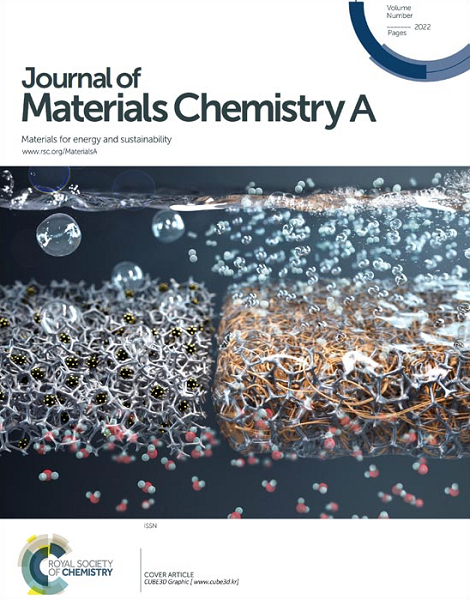Synergistic Upcycling Pt/Pd and Graphite from City Mines for Highly Efficient Seawater Hydrogen Evolution Catalysis
IF 10.7
2区 材料科学
Q1 CHEMISTRY, PHYSICAL
引用次数: 0
Abstract
Seawater electrolysis offers a potential avenue for the unlimited production of green hydrogen. However, developing low-cost and highly stable electrocatalysts remains a critical challenge. Herein, we developed a waste materialization strategy to directly construct a novel Pt/Pd@SOG electrocatalyst from the recycled automobile catalyst and graphite anode. The as-fabricated catalyst exhibited superior performance in alkaline seawater electrolysis, delivering a low overpotential of 195 mV and 333 mV at current densities of 10 mA cm⁻² and 100 mA cm⁻² for hydrogen evolution reaction (HER), respectively, outperforming the commercial Pt/C (228 mV and 372 mV). The state-of-the-art high turnover frequency (TOF) of 43.745 s⁻¹ has been delivered. Additionally, the catalyst demonstrated exceptional stability at a current density of 100 mA cm⁻² for over 192 hours. A comprehensive characterization and mechanism study reveals that the graphene-based material provides a fast electron transport pathway and guarantees excellent electron conductivity to the catalytic active center, while the d-d orbital coupling between Pt and Pd within the as-synthesized Pt/Pd@SOG significantly lowers the energy barrier for electron transfer during catalytic reaction and stabilizes the intermediate's adsorption at the Pt sites, thus promoting the HER reaction. This research demonstrates a rapid valorization pathway for synergistic materializing multiple city mine wastes for advanced seawater electrocatalyst, which synergistically addresses the critical element cycling challenge and paves the way for sustainable energy catalysis.求助全文
约1分钟内获得全文
求助全文
来源期刊

Journal of Materials Chemistry A
CHEMISTRY, PHYSICAL-ENERGY & FUELS
CiteScore
19.50
自引率
5.00%
发文量
1892
审稿时长
1.5 months
期刊介绍:
The Journal of Materials Chemistry A, B & C covers a wide range of high-quality studies in the field of materials chemistry, with each section focusing on specific applications of the materials studied. Journal of Materials Chemistry A emphasizes applications in energy and sustainability, including topics such as artificial photosynthesis, batteries, and fuel cells. Journal of Materials Chemistry B focuses on applications in biology and medicine, while Journal of Materials Chemistry C covers applications in optical, magnetic, and electronic devices. Example topic areas within the scope of Journal of Materials Chemistry A include catalysis, green/sustainable materials, sensors, and water treatment, among others.
 求助内容:
求助内容: 应助结果提醒方式:
应助结果提醒方式:


